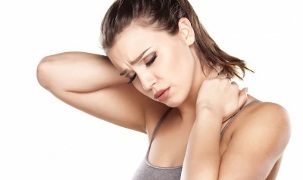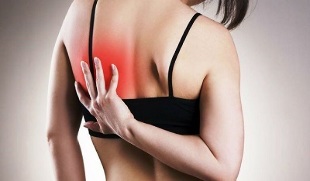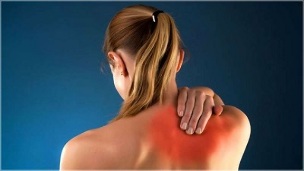
Osteochondrosis occurs in women approximately twice as often as in men. The reasons for this lie both in the peculiarities of anatomy and physiology, as well as in the way of life, traditional ideas.
The symptoms of cervical osteochondrosis in women and their treatment are generally similar to those found in men. But there are also special cases due to biological differences.
Symptoms of cervical osteochondrosis in young and mature women
Previously, it was believed that most cases of osteochondrosis occur in women "over 50 years old. "But in recent years, cervical osteochondrosis has been drastically "rejuvenated", its detection in a 30-year-old woman is no longer a rarity.
The manifestations of osteochondrosis in women and men are similar: pain during movement, crunching, headaches, visual and hearing deficiencies, numbness of the extremities, chin, part of the face. Less often than men, women experience nausea. But the prerequisites for the manifestation of symptoms of the disease in representatives of different sexes are different. In men, this is usually caused by injuries and excessive stress.
In women, the symptoms of cervical osteochondrosis depend on other factors.
- Objectively, women have weaker muscles and bones, this is physiology. Therefore, the spine of a woman is subject to more severe stress. That a man. For lack of muscular corset.
- The hormonal factor affects the condition of the spine. Therefore, the appearance and exacerbation of osteochondrosis in young women provoke pregnancy and menstruation, in mature women - the onset of menopause.
- Women have traditionally performed many types of housework that require a slight tilt of the head. It's bad for the neck. One of the signs of damage to the seventh cervical vertebra even received a "feminine" name: "widow's hump" or "housewife roller. "In men, this symptom practically does not occur.
- Other types of work with the head slightly tilted forward lead to the same result. This position should be taken at a computer or desk, and among women there are many representatives of "sedentary" professions (teachers, secretaries, cashiers, dispatchers).
- Older women who have reached retirement age, under the influence of irrational traditions, "greet themselves. "They stop controlling their weight and lead a sedentary lifestyle. These are favorable conditions for osteochondrosis.
- Women suffer from diet mania much more often than men. Violation of nutritional balance leads to the appearance of osteochondrosis and its exacerbations.
These factors cannot be avoided. But you can detect the symptoms of cervical osteochondrosis in women in time, and their treatment will give a positive result.
Pain syndrome: what pains can occur with cervical osteochondrosis
Pain is one of the main symptoms of osteochondrosis. But it is important to know what pain can occur in cervical osteochondrosis. This is necessary in order not to treat an ineffectively non-existent disease in place of osteochondrosis and not to lose the threatening signs disguised as osteochondrosis.

More often, with osteochondrosis, there is pain in the neck: sharp when moving or dull, aching for a long time. But this pain immediately suggests a spinal injury. It is worse when it yields to completely different organs. This is due to the compression of the deformed vertebrae and discs of the nerve roots and blood vessels.
- The head can hurt in different areas (depending on which vertebrae are damaged). Such pain can be confused with migraine, neuritis, manifestation of VSD.
- Shoulder pain sometimes occurs, especially when trying to lift the arm. There is no point in treating bursitis.
- Pain can radiate to the entire arm. This symptom usually only works on one side.
- The most dangerous option is pain in the chest or below the shoulder blade. It can be confused with signs of heart disease, including myocardial infarction. It's okay if osteochondrosis forces you to unnecessarily bother the cardiologist. It is worse if the first signs of a heart attack are mistaken for osteochondrosis.
The intensity of the pain may vary. In the early stages, there is periodic low back pain and dull muscle tension pain. But with the development of the disease, lumbago can literally become unbearable, depriving the patient of the opportunity to move his head completely.
Osteochondrosis with radicular syndrome in women
If this phenomenon occurs in the lower back, it is generally called radiculitis. Its essence lies in the compression of the nerve roots that extend from the spinal cord by vertebrae and deformed intervertebral discs.
Root syndrome manifests itself in acute severity of symptoms: severe pain and swelling, dizziness, fainting, panic attacks. It occurs only if the disease was poorly treated or not treated at all. This is the greatest danger for women in our country: they tend to “hold out”, “not pay attention to the little things” or be content with home remedies, and this is not always acceptable.
Osteochondrosis with radicular syndrome cannot be treated on its own. It manifests when the modified discs already protrude, form hernias, and growths have formed on the vertebral bodies. Serious diagnostics and a professional impact to the spine are required to stop this process. And pronounced symptoms cannot be eliminated with home methods.
Cervical osteochondrosis in women in acute stage
Exacerbations of osteochondrosis occur periodically in all patients. You can determine the appearance of an exacerbation by increasing the manifestation of symptoms and the appearance of new ones (pain intensifies, headaches or fainting spells appear, vision deteriorates, insomnia occurs. . . ). In women, snoring during sleep can also be a sign of exacerbation. But it is more important to know what reasons can cause an exacerbation. And avoid them or be prepared to fight the disease.

Typical cases: a sudden change in lifestyle, intense physical activity, infectious diseases, stress, trauma. But women also have specific body conditions that can cause a decline in well-being.
- Worried about being overweight, women are more likely to turn to strenuous diets. And no one cares how this will affect health. And a radical diet can cause serious damage to the spine.
- If osteochondrosis is present, women should expect it to become severe during menstruation or pregnancy.
- The same can happen when using hormonal contraceptives: osteochondrosis is sensitive to hormonal balance. It affects the health of the joints.
- Menopause is a serious factor affecting the spine. Older women should be especially attentive to themselves. However, most patients with osteochondrosis are their age.
Cervical osteochondrosis in women in the acute stage is treated in the same way as in men. In some cases, hormone therapy (or cancellation) may be required. You should not act on your own, home treatment is used during the remission period.
Treatment of osteochondrosis of the neck in women: characteristics
Strictly speaking, there are none. Women are shown the same medications as men:
- painkillers;
- non-steroidal anti-inflammatory drugs;
- muscle relaxants for muscle relaxation;
- medicines to normalize blood pressure and relieve vascular spasms;
- vitamin complexes;
- chondroprotectors for the restoration of cartilage tissue.
These medications may be offered as injections (in severe cases), tablets, or topical treatments. They are prescribed by a doctor. He also recommends massage and physiotherapy procedures; Without them, the treatment of osteochondrosis cannot work. Recovery gymnastics is a must, and it's the same for women and men too.
Most of the time women are prescribed sedatives. Although women (contrary to popular belief) are more resistant to stress, their nervous reactions are more pronounced. Short temper, depression, and panic can adversely affect treatment.
Home remedies for osteochondrosis of the neck
Symptoms of cervical osteochondrosis in women and their treatment are often associated with nervous reactions. Calming teas should be recommended especially for women. They can be prepared from lemon balm, chamomile, mint. There are ready-made herbal preparations for sale. This will improve overall health, sleep, and attunement to fight disease.
You can use home remedies to relieve pain: horseradish or burdock leaf, steamed celandine herb. The compresses should not be too hot, this is dangerous for the vessels of the brain. Homemade ointments are also suitable as a warming agent. You can prepare a mixture of mummy and butter (1: 1) or Vaseline with honey, mint and red pepper (in grams: 100: 20: 3: 2). Suitable for grinding and vodka-pepper.
Baths with pine needles (you can use a ready-made extract) or sea salt and oak leaves are very suitable during remission or to temporarily relieve pain.
And naturally, women need to exercise regularly and lead a moderately active lifestyle to strengthen the muscle corset around the spine.
It is not so difficult to identify the symptoms of cervical osteochondrosis in women and its treatment is not impossible. It is more important that women themselves are more attentive to themselves and lead a rational lifestyle.





































